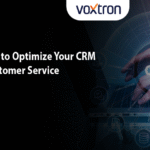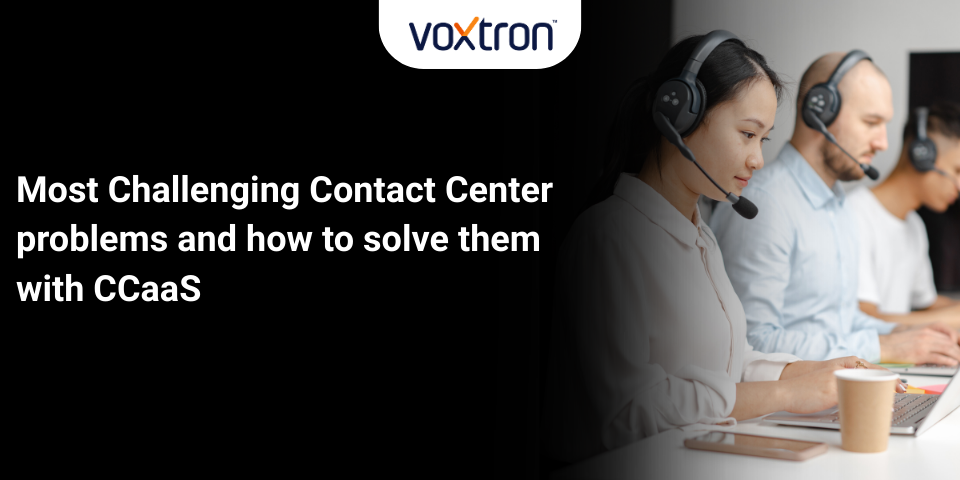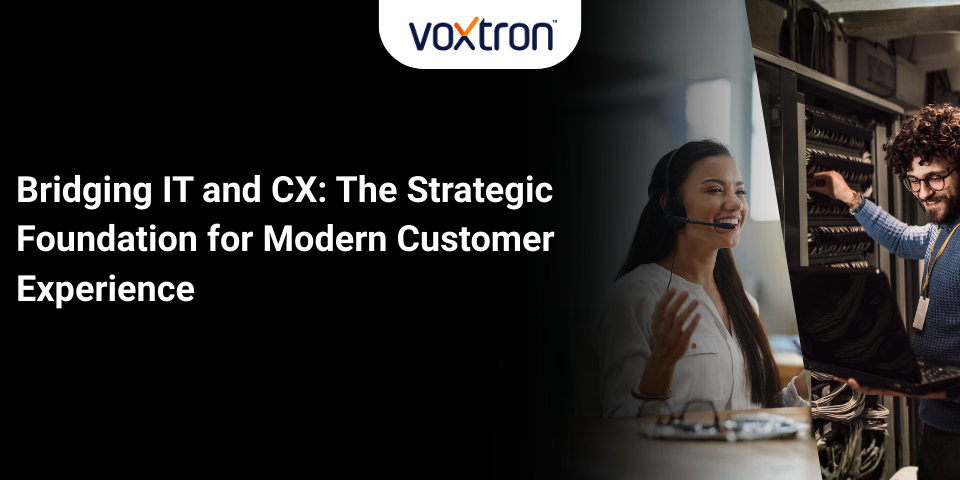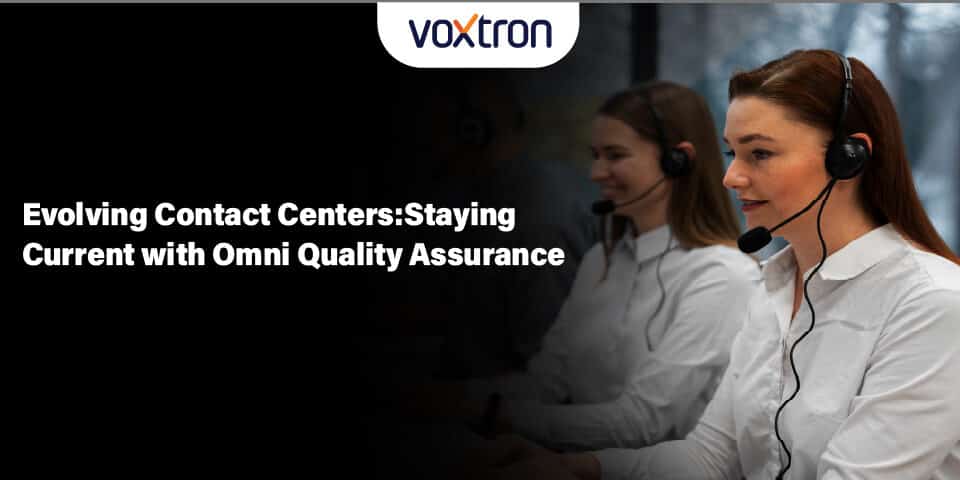
Six Best Practices to Optimize Your CRM for Enhanced Customer Service
September 9, 2025
What Your Employees Should Know Before Transitioning to Odoo
September 17, 2025Are You Losing Customers Due to Poor Contact Center Efficiency? Discover How CCaaS Can Help
Small and medium businesses that rely heavily on contact center performance for sales and support often underestimate the cost of inefficiency. Longer wait times, repeated calls, incomplete context, or limited channels lead to customer frustration, and churn.
If your leadership team is considering a move from a legacy ticketing or on-premise help desk system to a modern, scalable solution, this article discusses how CCaaS platforms solve the most common contact center efficiency issues.
The Cost of Inefficiency: Why Customers Leave?
Customer churn (the rate at which businesses lose customers) is a strong indicator of contact center performance.
Here are the main drivers of churn in contact center–dependent businesses:
Repeat Contacts and Low First Call Resolution (FCR)
Only 74% of top-performing centers meet target FCR levels.
When customers must call repeatedly to resolve a single issue, satisfaction drops and loyalty erodes. One of the reasons is that agents spend time switching between tools because on-premise platforms often lack deep integration with CRMs and knowledge bases.
This reduces FCR and increases customer frustration.
Long Wait Times and High Abandonment Rates
The industry standard for wait times is under 28 seconds. Delays beyond this threshold significantly raise call abandonment rates.
Up to 70% of abandoning customers do so silently, hurting agent efficiency by 3–15% and costing thousands annually per agent.
Inconsistent or Fragmented Multichannel Support
Legacy systems often focus only on voice or ticketing. Inquiries via chat, social media, SMS, or messaging apps are routed through disconnected systems.
However, 71% of consumers expect personalized service across channels. When agents can’t access unified customer data, customers are forced to repeat themselves creating fragmented, frustrating journeys.
Agent Burnout and High Turnover
Older ticketing systems and PBX-based centers offer limited automation and workforce management features. Manual tasks, rigid workflows, and poor scheduling can push occupancy outside the optimal 80–85% range.
This leads to agent stress, dissatisfaction, and high attrition with each exit disrupting service continuity and increasing training costs.
Outdated Systems and Siloed Data
Legacy infrastructure limits access to real-time customer data, making it hard to deliver personalized or adaptive service. Data stored in separate systems prevents agents from getting a 360-degree view of the customer, leading to slower, less effective support.
This wastes agent time and lowers customer satisfaction.
Lack of Analytics and Proactive Insight
Traditional help desks often lack dynamic reporting. Leadership sees ticket volumes, but not sentiment trends, bottlenecks, or agent performance in real time.
Without visibility into key metrics like FCR, CSAT, or queue health, continuous improvement becomes guesswork, and customer retention suffers.
Why Legacy Systems Fall Short
Older contact center technology limits growth and customer experience in the following ways:
- High Total Cost of Ownership: On-premise systems demand upfront hardware, licensing, and ongoing maintenance often running into hundreds of thousands in capital expenditure.
- Slow Time to Deploy or Scale: Adding agents or channels means hardware upgrades and reconfigurations. Rapid expansion or seasonal spikes strain service quality.
- Fragmented Tech Stack: Agents juggle disconnected tools—IVR logs, CRM, ticketing platforms. This slows resolution and breaks context.
- Limited Remote and Hybrid Support: On-prem systems tether operations to physical locations, with minimal continuity or flexibility for distributed teams.
How CCaaS Solves the Efficiency Challenge?
Modern Contact Center as a Service (CCaaS) platforms use cloud technology, AI, and tight integrations to transform contact center performance. Here’s how they address common inefficiencies:
1. Improve First Call Resolution with Unified Access
CCaaS consolidates customer data from CRMs (like Odoo), past interactions, and ticketing systems into a single view. Agents can resolve issues quickly without transferring or repeating steps.
Result: Faster resolution, fewer repeat calls, and improved FCR.
2. Reduce Wait Times and Abandonment
Skill-based routing, real-time queue management, and callback features help minimize delays. IVRs and virtual hold systems reduce customer frustration during peak times.
Result: Lower abandonment and improved retention.
3. Deliver Seamless Omnichannel Support
CCaaS platforms unify voice, chat, email, SMS, and social messaging. Intelligent bots and AI assistants provide consistent support and ensure conversations flow naturally across platforms.
Result: More personalized, context-rich support—anywhere your customer reaches out.
4. Prevent Agent Burnout with Smart Workflows
Repetitive tasks like call logging and case creation are automated. Built-in forecasting and scheduling tools allow managers to allocate resources efficiently and monitor performance in real time.
Result: Higher agent productivity, lower stress, and better retention.
5. Gain Actionable Insights
CCaaS systems offer real-time analytics on CSAT, queue metrics, agent performance, and customer sentiment. Dashboards help leaders pinpoint trends and resolve issues before they escalate.
Result: Smarter decisions, continuous improvement, and better customer outcomes.
What Business Leaders Should Know About CCaaS
For leadership teams evaluating contact center upgrades, here’s what makes CCaaS a strategic move and not just a tech change:
- Flexibility to Scale On Demand
Whether scaling up during promotions or reducing during lean periods, CCaaS lets you adjust with ease. No new hardware or lengthy deployment cycles needed.
- Faster Time to Value
Unlike legacy systems that take months to implement, CCaaS platforms can go live in weeks. Built-in chatbots, IVRs, and routing tools deliver immediate improvements in service delivery.
- Cost-Efficient Over the Long Term
With minimal upfront investment and predictable subscription pricing, businesses save on infrastructure and maintenance. The bigger return comes from reduced churn and better customer loyalty.
- Seamless Integration with Existing Systems
If you already use Odoo CRM, IVR flows, or third-party bots, a good CCaaS solution connects them all. Unified workflows mean less duplication, better insight, and faster resolution.
- Business Continuity and Remote Readiness
Cloud-based operations ensure service continuity regardless of location or disruption. Whether fully remote or hybrid, CCaaS supports centralized visibility and decentralized teams.
Final Thoughts
A cloud-native CCaaS platform offers the agility, intelligence, and scale today’s customer demands. It ensures faster resolution, seamless channel experiences, and happier agents—while giving leadership the insight to act strategically.
Whether exploring omnichannel tools, integrating with Odoo, or unifying your support systems, CCaaS delivers measurable value without disrupting your core operations. For more information on how the switch to an efficienct CCaaS solution like Voxvantage can benefit your business and what it entails, contact our team today.




